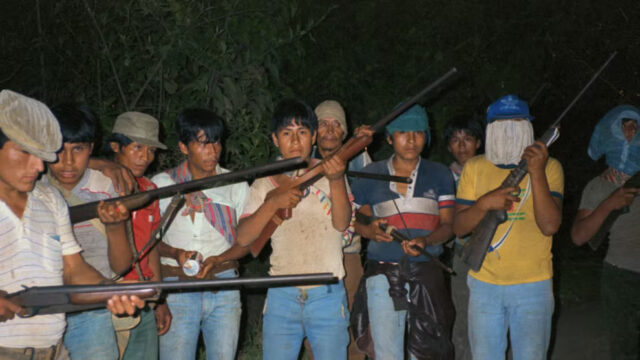
Brief: Peru Seeks to Close Door on Shining Path
Publication: Terrorism Monitor Volume: 21 Issue: 6
By:

The February 11 ambush in the valley of the Apurímac, Ene, and Mantaro rivers (VRAEM) region of Peru may prove to be the final nail in the coffin for Shining Path. With seven officers killed in the ambush, including from the National Directorate of Special Operations and the Natividad police force, the Peruvian government has now become more determined to not only eradicate the remnants of Shining Path in VRAEM, but also the narco-trafficking industry more generally (Elcomercio, February 12). Following the ambush, Peruvian president Dina Boluarte vowed to “fight against this alliance of terrorism and drug-trafficking in the VRAEM and throughout the nation’s territory” and asserted that “[w]e will not allow more deaths and more violence” (Ambito, February 13).
Boluarte has herself been mired in political controversy since she became president in early December 2022. This occurred following the removal of Pedro Castillo from the office of president, after he attempted to dissolve the Peruvian Congress. Although Boluarte initially sought to promote unity and to combat corruption, it appears that counter-terrorism has quickly moved up her list of priorities (Elpais, December 12, 2022). In implementing a Peruvian version of the “War on Terror,” Boluarte will now be able to portray herself as a strong leader. This may further shore up her political support as well as insulate her from being ousted like her predecessor, Castillo.
The ambush was also surprising insofar as it was inconsistent with recent trends regarding the security forces’ confrontation with the Shining Path and related narco-traffickers. In January, for example, the Ayacucho People’s Defense Front (FREDEPA) chairwoman, Rocio Leandro Melgar (also known as “Comrade Cusi”) was arrested at the Home of Teachers building in Ayacucho, Huamanga province in VRAEM (Andina, January 13). Moreover, in October 2022, the Peruvian security forces claimed to have killed 15 Shining Path members in VRAEM (Dialogo-Americas, October 3, 2022). Thus, the momentum was with the security forces prior to the February 11 ambush.
Although FREDEPA is not Shining Path in name, the Peruvian government associates the two as if FREDEPA were a front group for Shining Path. Indeed, Comrade Cusi had been involved in Shining Path since the organization was founded in the 1980s. However, FREDEPA—and specifically the “Red Faction” in which the Peruvian security forces allege Comrade Cusi participated—does not generally conduct attacks like Shining Path did during its 1980s heyday or like the ambush on February 11. Rather, Comrade Cusi was better known for providing money to illegal miners to protest against “capitalism in Huamanga and other sites in Peru” (Latin-America.News, February 16). In what can be seen as a positive development, a number of former Shining Path members have largely abandoned the group’s previous modus operandi of lethal terrorist attacks and massacres of civilians; instead, some have adopted political pressure activities that are more in line with democratic conventions.
Another example of the changing tide in Shining Path was Iber Maraví’s leading of marches to protest Comrade Cusi’s arrest (Peru21, January 13). Although Maraví had been the labor minister under Castillo, former Shining Path members allege that he had been the commander of Shining Path’s “North Zone” in the 1980s—when Shining Path was at its most violent (RPP, September 21, 2021). Thus, while Shining Path and narco-traffickers are still militant in nature, it appears that the old-guard members of the Shining Path who are not in prison have gradually resorted to political pressure. Younger members, however, may be less interested in Marxist ideology and more oriented towards narco-trafficking and conducting attacks to protect their illicit business activities.



